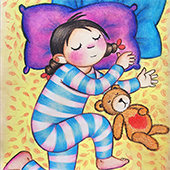Pastels can be applied with sharp, linear, soft, broad and textured strokes to achieve dramatic effect in the drawing. Following are the different strokes used for pastel painting explained using photographs.
Types of Strokes are given below:
• Side Stroke
• Firm Stroke
• Tapered Stroke
• Scribbling
• Squiggly Lines
• Varying Pressure
• Cross Hatching
• Pointillism
• Feathering
• Overlaying
• Scratching
Side Stroke: This is useful to cover larger areas using broad strokes mainly for skies and water.


Firm Stroke:
It is useful to draw bold and linear elements like stems and branches. To create this stroke, use heavy pressure and a tip of the pastel.


Tapered Stroke:
Apply more pressure at the bottom of the stroke and lighten the pressure as you end the stroke for animal hair or fathers.


Scribbling:
These are random strokes used to cover larger areas and convey textures like foliage and trees. For doing this hold the pastel stick lightly and draw freehand.


Squiggly Lines:
It is useful for drawing waves and moving water.


Varying Pressure:
It uses heavier pressure while starting stroke and then gradually reduces the pressure while drawing lines. Mainly useful to draw Grass, reflections and water ripples.


Cross Hatching:
It is used to draw cloth textures and to cover larger areas without over saturating the surface.


Pointillism:
It is consists of a series of dots to build color for large areas of color. If you look at this from a distance, the dots appear to merge into one color, as the human eye visually blends them.


Feathering:
It is layers of feathery, light, diagonal strokes of various colors to create the rough textures.


Overlaying:
Apply a base color and then layer the second color over the base color. Following are two different examples of overlaying using soft pastels and oil pastels.


Scratching:
This is a very simple and unique technique, can be achieved only by using oil pastels only. In this first apply base layer using oil pastel or any other painting medium. Then apply second layer of oil pastel using overlaying technique. Scratch out some color from second layer using comb, needle or painting knife. The more colors you overlay, the greater the variety of colors that will be exposed by scratching.
http://www.sakuraofamerica.com/oil-pastel-drawing-techniques




Scratching can also be used for creating interesting textures.



